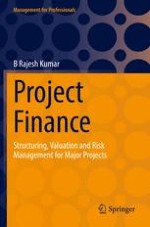2022 | OriginalPaper | Buchkapitel
11. Case 7: California High Speed Rail Project
verfasst von : B Rajesh Kumar
Erschienen in: Project Finance
Verlag: Springer International Publishing
Aktivieren Sie unsere intelligente Suche, um passende Fachinhalte oder Patente zu finden.
Wählen Sie Textabschnitte aus um mit Künstlicher Intelligenz passenden Patente zu finden. powered by
Markieren Sie Textabschnitte, um KI-gestützt weitere passende Inhalte zu finden. powered by
